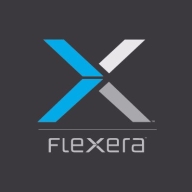


Flexera Cloud Management Platform and Red Hat CloudForms are competing in the cloud management solutions category. Flexera CMP seems to have the upper hand due to better support and pricing flexibility, while Red Hat CloudForms excels in integration and robust features.
Features: Flexera CMP offers comprehensive cost management and optimization with automation and policy-driven governance. It includes valuable features like multi-cloud management, robust cost analysis, and effective budget alerts. Red Hat CloudForms integrates seamlessly with existing IT systems and offers powerful orchestration capabilities. It supports dynamic catalogs, enhanced hybrid cloud configurations, and API-integrated workflows.
Room for Improvement: Flexera CMP could enhance its user interface for ease of navigation and improve its learning resources for faster onboarding. Users may also benefit from more advanced analytics tools. Red Hat CloudForms might improve its initial setup complexity by simplifying deployment processes and offering more intuitive user guidance. Additionally, expanding its compatibility with non-Red Hat ecosystems could enhance its versatility.
Ease of Deployment and Customer Service: Flexera CMP provides a smoother deployment process with straightforward configuration and exemplary customer service to support users. Red Hat CloudForms, while requiring more expertise for setup, benefits from comprehensive documentation and a robust support network that effectively aids in overcoming deployment challenges.
Pricing and ROI: Flexera CMP is noted for its transparent pricing models leading to immediate cost optimization benefits with a favorable ROI. It offers lower initial costs and faster time-to-value. Red Hat CloudForms requires a higher initial investment that can be justified by its long-term efficiencies and powerful functionalities, appealing to those valuing robust capabilities over upfront cost concerns.


IBM Turbonomic offers automation, planning, and right-sizing recommendations to streamline resource management, improve efficiencies, and optimize costs across virtualized environments and cloud platforms.
IBM Turbonomic is valued for its capability to optimize resource allocation and monitor virtual environments efficiently. It facilitates automated decision-making in VM sizing, load balancing, and cost optimization for both on-premises and cloud deployments. Users can leverage insights for workload placement, ensure peak performance assurance, and effectively right-size across VMware and Azure. The ongoing transition to HTML5 aims to improve visual and navigational ease, while expanded reporting features are anticipated. Opportunities for improved training, documentation, and integrations enhance platform usability and functionality.
What Are the Key Features?In finance, IBM Turbonomic aids in maintaining platform efficiency during market fluctuations. Healthcare organizations leverage its capability for resource optimization during high-demand periods to enhance patient care support. Retailers use it for planning in peak seasons, ensuring resources align with fluctuating demand to maintain performance continuity.
Flexera Cloud Management Platform (CMP) optimizes cloud costs and resources while efficiently managing multi-cloud environments. Its features for monitoring and governance aid in compliance. Valued for integration capabilities and automation tools, Flexera CMP streamlines cloud operations.
Flexera Cloud Management Platform (CMP) excels in multi-cloud management, cost optimization, and automation. Users appreciate its detailed analytics and reporting features that effectively track usage and costs. The platform's flexibility in integrating with different cloud environments allows seamless operations across various services, while its governance and policy enforcement are significant strengths. However, some users note the need for better integration with additional cloud providers, a high installation complexity, and that the support documentation lacks depth. Reporting features could be more comprehensive, and scalability issues exist in larger environments. Frequent updates can sometimes disrupt ongoing activities.
What are the Key Features of Flexera CMP?Flexera Cloud Management Platform is utilized across numerous industries, including finance, healthcare, and technology, to manage multi-cloud setups. Financial institutions leverage its cost optimization features to streamline expenses. Healthcare providers use its governance tools to ensure strict compliance with regulations. Technology companies benefit from its automation capabilities, allowing them to focus on innovation while Flexera CMP handles cloud infrastructure tasks.
Manage container, virtual, private, and public cloud infrastructures
Managing a complex, hybrid IT environment can require multiple management tools, redundant policy implementations, and extra staff to handle the operations. Red Hat® CloudForms simplifies IT, providing unified management and operations in a hybrid environment.
As your IT infrastructure progresses from traditional virtualization toward an Infrastructure-as-a-Service (IaaS) model, CloudForms evolves, protecting your investments and providing consistent user experience and functionality.
We monitor all Cloud Management reviews to prevent fraudulent reviews and keep review quality high. We do not post reviews by company employees or direct competitors. We validate each review for authenticity via cross-reference with LinkedIn, and personal follow-up with the reviewer when necessary.